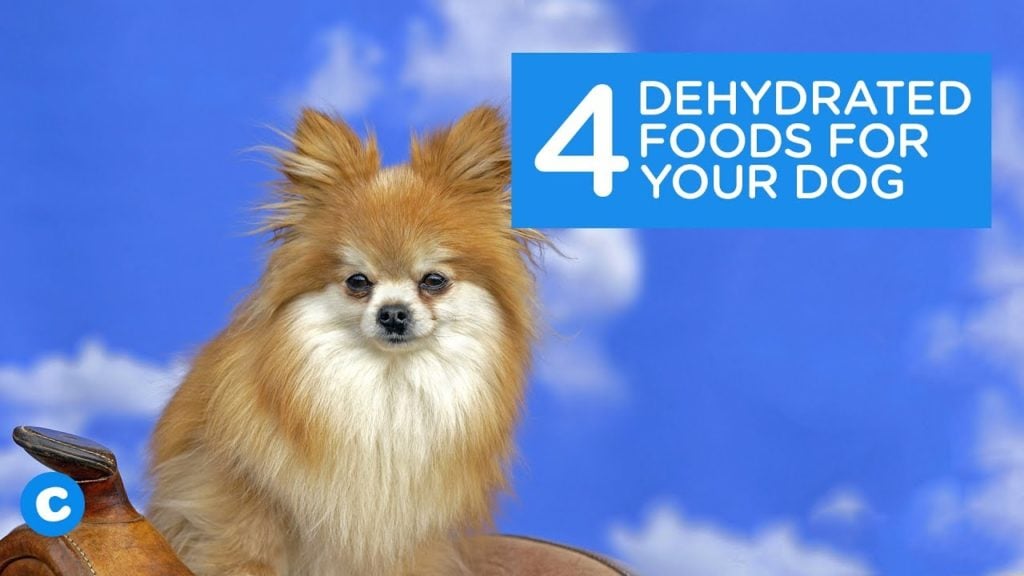These days, there seems to be endless options when it comes to the pet foods available for our beloved fur babies. With so many choices, it can be difficult to decide which one is the right one for your dog. Pet parents may even go to the extreme by making homemade dog food to ensure their pet is eating a nutritious meal. We always want to make sure we are choosing healthy food for dogs, and to do that, it is best to be informed on the pet nutrition benefits each food has to offer.
Dehydrated pet food has gained popularity with pet parents, but many people still don’t fully understand what makes it a potentially good option for their dog. As Russell Hartstein, Certified Dog/Cat Behaviorist and Trainer and CEO (Canine Executive Officer) of Fun Paw Care in Los Angeles, explains, “There are many different types of dog food—similar to the many foods we eat and the ways in which we prepare and enjoy them.” Although extruded dry dog food (kibble) is more widely available and ubiquitous than dehydrated dog food, it’s worth looking into dehydrated meals that lock in all the flavors and benefits of the whole foods that go into each recipe.
What Is Dehydrated Pet Food?
Dehydrated dog foods are minimally processed and have the same consistency as freeze-dried. The cooking method used to create dehydrated food is designed to preserve the nutritional value of each ingredient as much as possible. The wholesome, raw ingredients are cooked at a low temperature in order to remove the moisture without compromising their natural nutrients and enzymes. As Hartstein explains, “Dehydration typically involves heating to a lesser degree. Most of the water content is removed. The food is heated but not fully ‘cooked.’ This partial cooking removes many of the pathogens and microorganisms that are dangerous for dogs eating a raw meat-based diet (RMBD).”
Dehydrated pet food is a great option to ensure that you’re feeding safe, healthy foods for dogs—one that’s convenient to store and easy to prepare. It involves way less prep time than homemade dog food with no extra trips to the store for fresh ingredients.
The lack of moisture in dehydrated pet foods also means that they do not spoil easily, so they have a long shelf life without having to add any preservatives. To serve these types of food to your pet, all you need to do is add some water and allow the food to rehydrate. Basically, you’re getting the texture and the benefit of added moisture that wet food delivers, but in less processed food.
Is Dehydrated Pet Food Right For Your Dog?
Trying dehydrated dog food can help keep your pup interested in his food—it offers a new, exciting option that’s flavorful and enticing. Hartstein says, “If you notice your dog is not thriving on a certain type of food or is disinterested in what you are feeding them, you may want to try switching the texture and or process by which the food was prepared.” So, if your pet is not enjoying their food or not eating much of it, and you’ve ruled out medical reasons, talk with your veterinarian to see if dehydrated food is a good option.
Brands like the Honest Kitchen and Spot Farms make their dehydrated pet food recipes with human-grade ingredients and do not use any by-products, preservatives or GMO ingredients. I and Love and You’s raw beef boom ba dehydrated dog food provides whole food pet nutrition and doesn’t contain corn, wheat, soy, rice, gluten, GMO ingredients, fillers, by-products or artificial colors, flavors or preservatives. NRG The Raw One free wild caught salmon dehydrated raw dog food offers wild-caught salmon and farm-fresh fruits and vegetables for another appealing option.
These foods are great for pets with sensitive digestive tracts. The gentle cooking process also ensures that the ingredients retain their natural flavor, plus the nutrients and minerals that make them healthy foods for dogs. And because it’s easy to store, prepare and transport, it’s convenient for pet parents. Dehydrated pet foods can be a great alternative to conventional canned or dry foods, and much easier to make than homemade dog food. So be sure to consider all the options and talk to your vet if you decide to make the switch.
Share:













